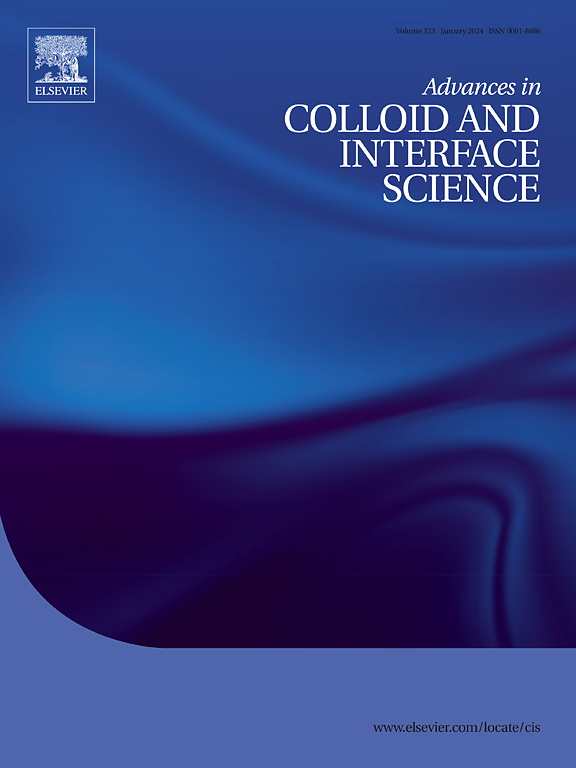绿色疏水和超疏水涂料及水相关应用表面综述
IF 19.3
1区 化学
Q1 CHEMISTRY, PHYSICAL
引用次数: 0
摘要
防水涂料和表面在现代生活中无处不在。它们用于消费品,食品包装,医疗设备和其他技术以及科学应用。几十年前引入的全氟烷基和多氟烷基物质(PFAS)是使这一创新成为可能的关键技术。PFAS涂层是一种低表面能、疏水的涂层,具有低摩擦和抗湿性能。PFAS材料和涂层已广泛用于实现极端抗润湿表面,即可以排斥水(超疏水)的表面,以及其他低表面张力的液体和油(超疏油)。这种材料和表面是创新水相关应用的理想选择,例如大气水收集,海水淡化或其他分离应用,其中极端的润湿性可以显着提高这些应用的性能。然而,PFAS是不可生物降解的,在环境中持续存在,并且越来越多的证据表明其对生态毒理学和健康产生负面影响。为此,各种替代品(天然疏水材料,如蜡或合成疏水材料,如碳氢化合物)已经开发出来,并在文献中报道了这些问题。然而,这些新涂料的采用是有限的,主要是由于缺乏系统的性能评估和提出的结果的多样性。本文综述了目前文献中最具发展前景的疏水性和超疏水性“绿色”涂层和表面,重点介绍了应用于大气集水和油水分离等创新水相关应用的涂层和表面。本文章由计算机程序翻译,如有差异,请以英文原文为准。

Green hydrophobic and superhydrophobic coatings and surfaces for water related applications: A review
Water-resistant coatings and surfaces are ubiquitous in modern life. They are used in consumer goods, food packaging, medical devices and other technical, as well as scientific applications. The introduction of per- and polyfluoroalkyl substances (PFAS) several decades ago was the key technology making this innovation possible. PFAS coatings are low surface energy, hydrophobic coatings, which exhibit low friction and antiwetting properties. PFAS materials and coatings have been extensively used to realize extreme anti-wetting surfaces, i.e. surfaces which can repel water (superhydrophobic), as well as other low surface tension liquids and oils (superoleophobic). Such materials and surfaces are ideal for innovative water related applications, such as atmospheric water collection, water desalination or other separation applications in which extreme wettability properties can significantly enhance the performance in these applications. However, PFAS are non-biodegradable, persistent in the environment and there is increasing evidence of negative ecotoxicological and health effects. To this end, various substitutes (natural hydrophobic materials such as waxes or synthetic hydrophobic ones such as hydrocarbons) have been developed and reported in the literature in response to these concerns. However, the uptake of these new coatings is limited, mainly due to the lack of systematic performance evaluation and the diversity of the results presented. This review paper focuses on presenting the most promising “green” coatings and surfaces for hydrophobicity and superhydrophobicity existing in the literature, focusing on the ones which are applied for innovative water related applications, such as atmospheric water collection and oil-water separation.
求助全文
通过发布文献求助,成功后即可免费获取论文全文。
去求助
来源期刊
CiteScore
28.50
自引率
2.60%
发文量
175
审稿时长
31 days
期刊介绍:
"Advances in Colloid and Interface Science" is an international journal that focuses on experimental and theoretical developments in interfacial and colloidal phenomena. The journal covers a wide range of disciplines including biology, chemistry, physics, and technology.
The journal accepts review articles on any topic within the scope of colloid and interface science. These articles should provide an in-depth analysis of the subject matter, offering a critical review of the current state of the field. The author's informed opinion on the topic should also be included. The manuscript should compare and contrast ideas found in the reviewed literature and address the limitations of these ideas.
Typically, the articles published in this journal are written by recognized experts in the field.

 求助内容:
求助内容: 应助结果提醒方式:
应助结果提醒方式:


